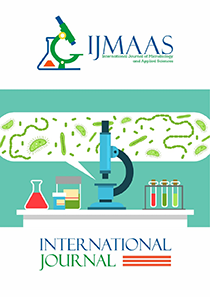Assessment of Heavy Metal Concentrations on the Iwofe and Choba Axis of the New Calabar River, Niger Delta, Nigeria
Vol 1, Issue 1, 2023
KEYWORDS
Choba; Iwofe; Niger Delta
Abstract
Heavy metals pose myriads of risk to humans and animals, hence it is necessary to continuously monitor their concentrations in the environment. This research was carried out to evaluate the heavy metal concentrations of the new Calabar River, between September to December 2020. Surface water samples were collected from four stations (STN1, STN2, STN3 and STN4) along the Choba and Iwofe axes of the river. Heavy metal analysis was by Atomic Absorption Spectrophotometry. The result of the study showed variation in heavy metals concentration (mg/l) across the stations studied. The concentration of the metals (mg/l) was as follows: Pb (0.03 ± 0.01– 1.55 ± 0.25); Cr (<0.01 – 0.07 ± 10); Cu (<0.01 – 0.19 ± 0.02); Ni (<0.01 – 0.03 ± 0.01); Zn (0.37 ± 0.13) and Cd (<0.01 – 0.83). Analysis of variance indicated that variation in the concentrations of Pb and Cr were not significantly different (p>0.05) but variation in the concentrations of Cu, Ni, Zn and Cd were significantly different (p<0.05) between the stations examined. Observations showed that metal levels were generally higher at station STN3 followed by station STN2 compared to other stations. Site discrimination using principal component analysis clearly distinguished stations of Choba and Iwofe axes based on their heavy metal concentrations. The study concluded elevated metal concentrations around ST3 of Iwofe axis of the New Calabar River but isolation of each station within the creek indicated dissimilarity in the water quality relative to heavy metal contamination. This was traced to anthropogenic inputs at the different stations studied.
Current: Vol. 4, Issue 1, 2025

Call for papers
The International Journal of Microbiology and Applied Sciences warmly welcome your valuable articles for publication.
